Опубліковано: 2020-04-10
Аудио отправлю в viber
Answer the questions.
What do you know about British schools?
What is common between your school and British schools?
What compulsory subjects do you study at your school?
Reading
The school year in Britain starts in September. The lessons last 40-45 minutes. British pupils wear a school uniform. The favourite colours are blue, grey, black and green. The first foreign language they learn at school is French. Sometimes they also learn a second foreign language: German, Spanish. British students have ten days at Christmas and Easter holidays and six weeks in the Summer. Schools also have special half-term holidays in the middle of each term.
Schools in England and America use their own marks: letters A -excellent, B – good, C – satisfactory, D – bad, E – poor.
In most English schools forms start only at the secondary school, at the age of eleven. So at the age of twelve British students go to the second form. At the age of twelve Ukrainian students go to the sixth form.
The school day starts with assembly. All schools organise a short daily meeting for the whole schools to give important information.
The five minutes between lessons is not a break. Pupils must use this time to move quickly to the next lesson. During the lunch hour pupils have time to do many things besides eating. They can also read in the library, participate in clubs or sport, and go home.
Post-reading task
Mark the following statements true(+) or false(-).
Write down your variants into your copybooks
1.School day starts with assembly.
2.British pupils go to school on Saturday.
3.The school year in Britain starts in August.
4.British pupils don’t wear a school uniform.
5.A school year in Britain has four terms.
6.The marking system in Britain is similar to that in Ukraine.
7. At the age of twelve British students go to the sixth form.
8.Science includes chemistry, physics, biology and mathematics.
9. Pupils can eat lunch in the school canteen.
10.British students have ten days at Christmas and Easter holidays
Pre-Reading.
Answer the questions.
1. Which school do you study at?
2. How many lessons have you got a day?
3. What compulsory subjects do you study at school?
4. What subjects are you good at?
5. What is your favourite subject? Why?
Reading(
Read the text and put the paragraphs( A-F ) in the correct order.
SCHOOLS IN UKRAINE
My name is Irene and I’d like to tell you about schools in Ukraine.
The right to education in Ukraine is guaranteed by the Constitution (Article 53). Every boy or girl must get secondary education; it means that secondary education is compulsory in our country. There are state schools where education is free of charge and private schools where pupils have to pay for their studies.
I live in Poltava. I study at a secondary school. My school was built more than twenty years ago. When I was ten I left primary school and went to a secondary one.
Now I am thirteen and I am a pupil of the eighth form. We go to school from Monday to Friday. We usually have six or seven lessons a day.
Every school has a core curriculum and a school curriculum. The core curriculum includes such subjects as Maths, Ukrainian and World Literature, Physics, History, Geography, English, German, Ukrainian Language and other subjects.
According to the school curriculum we can choose extra subjects such as Computer Studies, Psychology, Economics…. We’ve got Art, Music and Physical Training. I am good at all of them.
Lessons begin at 8 a.m. and last to 1 or 2 p. m. We have some breaks for lunch and rest. Teachers give us home tasks after each lesson.
Post- Reading tasks.
Test yourselves. Which statements refer to schools in Ukraine (U) and which ones to schools in Britain (B).
|
##№ |
|
or B |
|
1. |
There are three terms: Autumn, Spring and Summer. |
|
|
2. |
The right to education is guaranteed by the Constitution.(Article 53) |
|
|
3. |
Every school has a core curriculum and a school curriculum. |
|
|
4. |
Pupils can eat lunch in the school canteen. |
|
|
5. |
Children have 5 lessons in the morning and 2 after lunch. |
|
|
6. |
Lessons begin at 8 a.m. and last to 1 or 2 p. m. |
|
|
7. |
Schools use their own marks. |
|
|
8. |
One of the subjects is Ethnography. |
|
|
9. |
The school day starts with assembly. |
|
|
10. |
Teachers give us home tasks after each lesson. |
|
«Guess the room», «Guess the subject».
Books, newspapers, magazines are kept there. You go there to borrow or read books.
A room where you have lessons at school.
Meetings, performances, gatherings and parties are held in it.
A place where you can watch sports matches.
A room where you do exercises for your body.
A room where you can eat sandwiches and drink tea or juice during the break.
A room for teachers and class registers.
1. You do a lot of experiments during this lesson
2. You read books, stories and poems by different authors and discuss them
3. You use calculators to do the tasks at this lesson
4. Before this lesson you warm up and then run and jump in the gum.
5. You learn a lot of facts about different countries
6. At this lesson you learn about kings and queens.
7. You draw portraits and make different things during this lesson.


